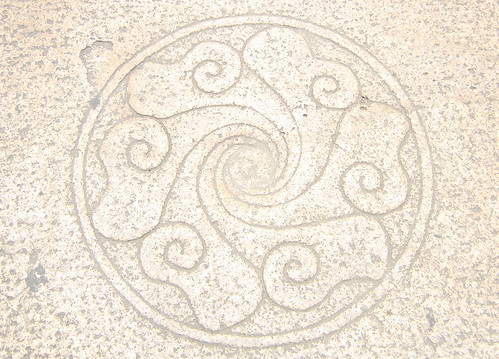This is an extremely informative post and gives insight into why we do the things we do (good or bad). Check it out and let me know what you think.
The original post can be found here as well as the Facebook Fan Page of Doc.Enjoy!
Wednesday, December 2, 2009
What's a Pattern?

Functional movement patterning is something I'm fascinated immensely by. And that fascination boils down to a two part question:
1. Etiology: How does dysfunction develop?
2. Treatment: How do we take dysfunctional patterns and re-educate them for optimal function again?
With screening & assessment tools such as the Functional Movement Screen & the Selective Functional Movement Assessment, we are able to identify dysfunctional movement that lies at the root of problematic movement or pain. With any variety of corrections that are available - ranging from manipulation/mobilization, to corrective exercise, to Z-Health, to yoga/martial arts - we can directly affect how the body's neuromuscular system deals with a particular motion.
Wait a minute!!!
What about joint problems?
What about muscle cramps?
What about tendinitis?
What about bone spurs?
What about compressed discs?
Yep... I hear you... and I want you to think slightly outside the box for a moment. Follow me through this line of thought, please.
All of the situations you've described above can be seen as mere symptoms. Not the true root of an underlying problem.
One of the mantras I've heard Z-Health practitioners use is "The nervous system is plastic."
No, that doesn't mean that your brachial plexus is 99% nylon. That means that you are capable of change.
Your body's muscular movement patterns, which are controlled by your nervous system, can be RE-PATTERNED by re-training your nervous system. And retraining the nervous system is often done by imposing a different level of awareness on an action.
My mentor, Gray Cook, calls that "proprioceptive awareness" when spoken about in the context of movement. But there are a growing number of studies where researchers are showing that movement training can directly impact individuals with cognitive disorders.
No $h!#... The Chinese have been saying for millenia that "The inside manifests on the outside, but the outside can change the inside."
Fortune-cookie-speak translation: If you recognize someone (or self) with psycho-social issues, no matter how minor or how major, you can positively affect that person if you can get him/her/yourself to modify your movement patterns.
NOW... back to the title of this post... What's a pattern?
A pattern is an established way of doing things that has become ingrained through practice. What oftentimes is dismissed as genetic or "inherited" is more likely a learned behavior.
Whether the pattern in question is valgus collapse under load, poor spinal posture when typing on your laptop, inappropriate scratching in public, binge eating, saying "uhhh" every few words, or being pathologically late, the reality is that all of these patterns are manifestations of a LACK OF CONTROL.
And that lack of control comes from two things: a lack of SELF-AWARENESS and a lack of understanding of CONSEQUENCES.
Let's take posture for example...
Someone may not be aware of their posture being kyphotic (slouched forward), and as a result, when they think they're standing straight, a 3rd person observer can see clearly that they're not. The nervous system, in this case, has calibrated itself to read the flexed T-spine as "neutral".
For that pattern to be broken, an intervention of sorts has to occur. Whether the person in question decides on his/her own to QUESTION and EXAMINE his/her own posture, OR a therapist intervenes to re-train the posture, the pattern needs inspection, analysis, and active modification to be re-learned. Ask anyone who's successfully changed their posture how difficult it was, and they'll almost all tell you that it took a lot of mindfulness - constantly reminding themselves to sit up straight, walk tall, etc., etc.
The same is true for speech, for movement, for any moment of any action that we are involved in. Mindfulness is the key to recalibration, the key to growth, the key to change.